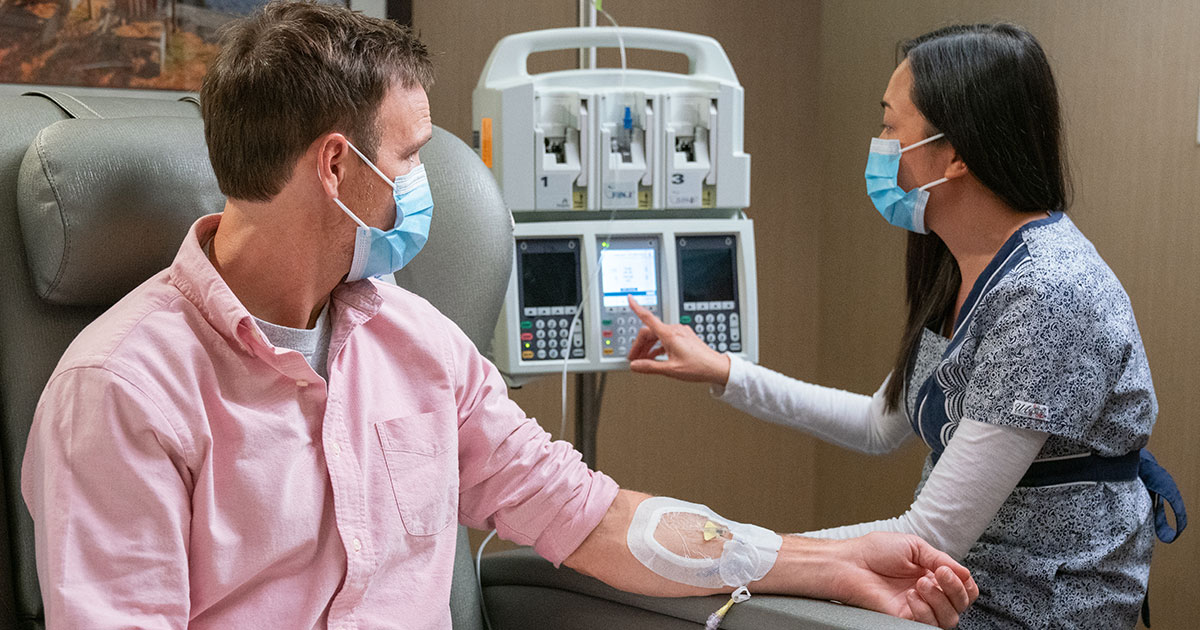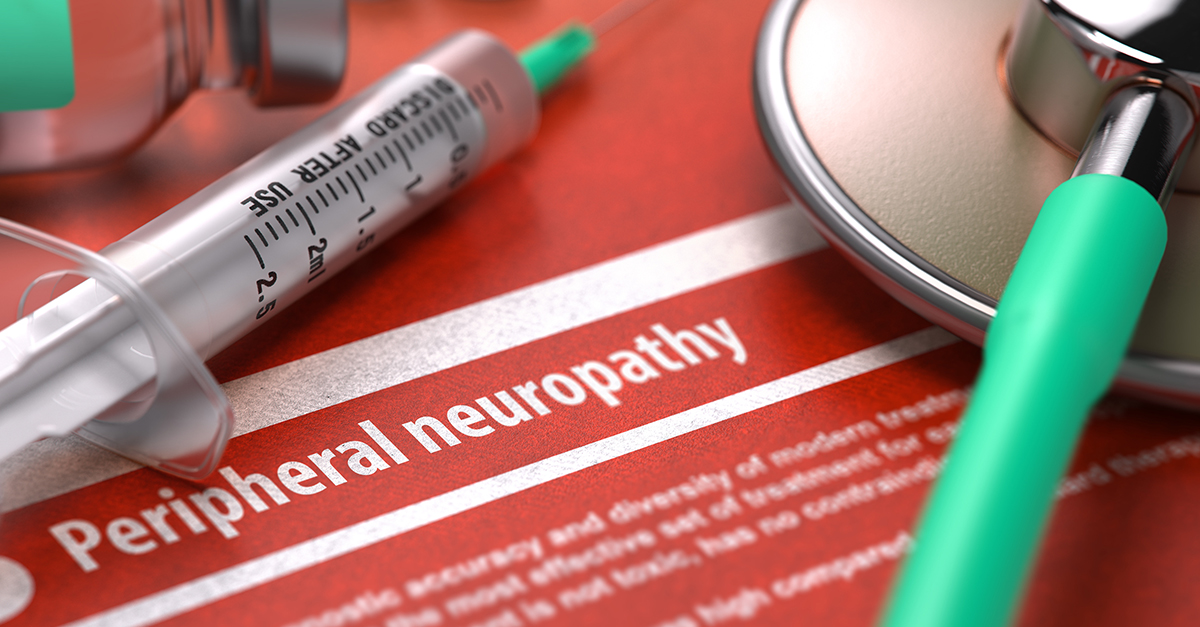
Chemotherapy. It’s the first word many cancer patients think about when they consider their cancer treatment options—and for good reason.
Chemotherapy is the most common type of cancer treatment and is the first-line standard of care of many specific cancers. Even if a patient requires radiation therapy or surgery, they may also be given chemotherapy before those treatments to shrink tumors, or after to help attack cancer cells that may have been left behind.
Cancer is a disease caused by cells growing out of control. These cells are usually growing faster than the rest of the body’s cells, so they divide more often. The object of most chemotherapy treatments is the same: to attack fast-growing cells, kill them and/or prevent them from growing and dividing.
Not all chemotherapies work the same way, though. Different types of chemotherapy drugs are designed to use different attack strategies. Some work by directly targeting the cancer cells’ DNA or RNA. Others work best during a specific phase in a cell’s cycle—either when it grows, prepares to divide or when it eventually splits into multiple cells.
Which type of chemotherapy drug is best for treating your cancer depends on a variety of factors, including the type of cancer and whether chemotherapy should be used in combination with other drugs.
“Over the years, investigators have explored a wide variety of chemotherapy options against cancers,” says Maurie Markman, MD, President of Medicine & Science at Cancer Treatment Centers of America® (CTCA). “If a particular class of drugs appears to activate against a specific cancer type, it’s likely other agents in this class will be examined as well. A wide variety of combination regimens also have been explored in the treatment of cancers.”
In this article, we’ll cover the most common types of chemotherapy, including:
If you have questions about chemotherapy treatment or other cancer treatments offered at Cancer Treatment Centers of America® (CTCA), or if you’re interested in a second opinion on your cancer diagnosis and treatment regimen, call us or chat online with a member of our team.
What are alkylating agents?
Alkylating agents are among the earliest chemotherapy drugs developed and are still the most common class prescribed. They may be used to treat blood cancers, lung cancer or breast cancer.
Because cancer cells divide so rapidly, they may develop more DNA errors and have fewer tools equipped to repair the damage. Alkylating agents work by introducing substances called alkyls into cancer cells. Alkyls may cause further instability in the cancer cells’ DNA strand, preventing the cells from growing or dividing.
Unlike some other chemotherapy agents, alkylating agents may work at any step along the cell-cycle process, but they appear to work best when cells are resting or dividing more slowly.
Common alkylating agents include cyclophosphamide, thiotepa and busulfan.
What are antimetabolites?
Antimetabolites are used to treat many cancers types, such as breast cancer, leukemia, lymphoma, ovarian cancer and intestinal cancer.
These drugs are designed to interfere with cell division. Once they’re inside the cell, antimetabolites are similar enough to the building blocks of DNA that the cell tries to use them to help divide. Because the drug’s faux building blocks don’t fit with the cellular machinery, the DNA copying process grinds to a halt.
Antimetabolites do their work while a cell is copying its genome, so they’re most effective during the step in the cell cycle called the “S-phase” of cell division. At that time, the cell has unfurled its chromosomes to make copies, leaving the cell more vulnerable to these drugs, which include 5-fluorouracil, methotrexate and capecitabine.
What are anti-tumor antibiotics?
Anti-tumor antibiotics are very different than antibiotics prescribed to treat an infection. They may be used to treat lung cancer, colorectal cancer, ovarian cancer and prostate cancer.
Antitumor antibiotics work by preventing a tumor’s DNA from feeding RNA with certain genetic instructions critical for the cell’s survival. Anti-tumor antibiotics are also designed to unfurl the DNA strand in a cancer cell, which prevents the cell from dividing.
These drugs are not cell-cycle specific. Common examples are doxorubicin, mitoxantrone and bleomycin.
What are plant alkaloids?
As their name suggests, these chemotherapy drugs are derived from plants and natural products. They may be used to treat blood cancers, lung cancer and breast cancer.
Common plant alkaloids include:
Topoisomerase inhibitors
These drugs are designed to prevent the enzyme topoisomerase from helping DNA build its double-helix structure, leading to unstable cell structure. While many topoisomerase inhibitors are plant-based, some are derived from synthetic substances.
Common topoisomerase inhibitors include vincristine, etoposide and topotecan.
Mitotic inhibitors
These drugs are designed to prevent cell mitosis, the process in which a single cell divides into identical cells, called daughter cells. Common topoisomerase inhibitors include docetaxel and paclitaxel.
Plant alkaloids work best during several different times during the cell cycle.
Chemotherapy at CTCA
At CTCA®, we understand the nuances of how different types of chemotherapy drugs work, and when one type may be more appropriate than another.
Chemotherapy drugs are most commonly given by injection or infusion, although some used to treat skin cancers come in the form of a topical cream. Some drugs may also be given in pill form for patients to self-administer at home. Taking chemotherapy drugs at home is a serious commitment, however, since dosages may need to be taken at specific times and these drugs need to be handled with extreme care.
Chemotherapy drugs are usually given in three- or four-week cycles, designed to give the body a rest period between doses to allow normal cells to recuperate. Often, doctors prescribe multiple chemotherapy drugs to be taken together, to provide a better chance of fighting the cancer.
“Different anti-cancer drugs may have widely varying side effect profiles,” Dr. Markman says. “A major challenge in designing combination strategies is the potential for overlapping side effects, such as bone marrow suppression, which may limit the potential for some drugs combinations.”
At CTCA, we also work closely with patients to manage, and when possible, prevent side effects caused by many chemotherapy drugs. These side effects may include:
- Fatigue
- Digestive issues, such as nausea and diarrhea
- Weight loss or weight gain
- Hair loss
- Mouth sores
- Weakened immune system, which may lead to infections
Most side effects subside once treatment is completed.
All CTCA patients are treated not only by a team of doctors, but also by supportive care providers experienced in strategies to help relieve treatment-related side effects. Supportive care services may include:
If you have questions about chemotherapy treatment or other cancer treatments offered at CTCA, or if you’re interested in a second opinion on your cancer diagnosis and treatment regimen, call us or chat online with a member of our team.


